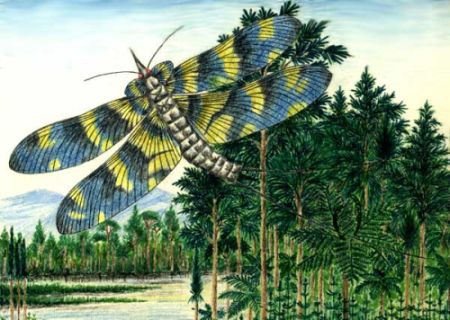|
|
Palaeodictyopteroida |
| Arthropoda |
Overview |
Palaeodictyopteroida
Palaeodictyopteroida

Dunbaria fasciipennis described from the Early Permian (Artinskian) Welington Formation of Kansas. The original colour patterns are preserved in fossils (but not the actual colour), including bright and dark patches. Like other members of the family Spilapteridae, the wings relatively broad and rounded at the corners. Image and some text from Zoological excursions on Lake Baikal . |
The Palaeodictyopteroida (also spelled Palaeodictyopter-ida, but we have chosen to use the original spelling) constituted the first major adaptive radiation of herbivorous insects, and hence the first herbivores that would have impacted very strongly on plant ecosystems. They also shifted the Paleozoic terrestrial foodchain from an inefficient detritivore-carnivore based system to an efficient photosynthesis-herbivore based one. On the one hand the most primitive of all flying insects, many retaining the primitive extra wing flaps (paranota), and yet on the other the most specialised of the three branches of Paleozoic "ancient wings", Their unique adapation was the evolution of long biting and sucking mouthparts, as opposed to the more conventional and less specialised jaws of their contemporaries. They were by far the most numerous and diverse of all Paleozoic insects, as well as the most colourful; with wing markings preserved on fossils hundreds of millions of years old; in a sense they were the butterflies of the ancient world. They also have the unhappy reputation of being the only major clade of insects to become extinct; the result perhaps, of the end Permian ecosystem collapse. That this extraordinary evolutionary experiement is virtually unkown today outside the paleoentomological community is a shame, because these ancient wonders have much of interst about them MAK120521
